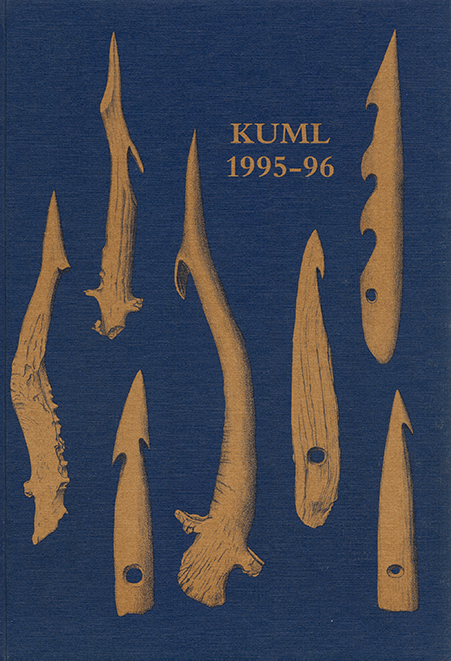A hidden Revelation in the Bayeux tapestry? What was Harald Godwinson’s purpose in Normandy?
DOI:
https://doi.org/10.7146/kuml.v40i40.112340Keywords:
Bayeux tapestry, harald godwinson, normandyAbstract
A hidden Revelation in the Bayeux tapestry?
What was Harald Godwinson's purpose in Normandy?
The Bayeux tapestry is a more than 900 year old, 70 meter long embroidery whose many pictures tell of events in Normany and England before and during the Battle of Hastings in 1066, when Duke William of Normandy won his famous epithet, the Conqueror. The long wall hanging is thought to have been made in England, perhaps in Canterbury, for William's halfbrother, Bishop Odo of Bayeux, and was completed for the consecration of Bayeux Cathedral in 1077. The tapestry is exhibited in Cenre Guillaume le Conquérant in Bayeux.
The classical interpretation of the subject matter of the Bayeux tapestry is based on its own short Latin texts and contemporary descriptions in Norman chronicles (William of Juminéges and William of Poitier). According to these Harold Godwinson of Wessex traveled to Normandy in 1064 to confirm to Duke William on behalf of King Edward the Confessor the promise earlier given by the king to his relative William that he should inherit the crown of England after the death of the childless king (fig. 1-2).
After a number of dramatic events in which William and Harold give aid to one another, Earl Harold swears that he in due course will support the Duke in his demand (fig. 3). Harold returns home to meet the king (fig.4). The king dies and the earl allows himself to be declared king of England. In anger William gathers a fleet together, invades England, and defeats the English army at Hastings, where Harald falls.
However there is another explanation of Harold's journey. The English monk Eadmer relates in his chronicle, a History of Recent Events in England , which was written in Canterbury ca. 1115, that Harold asked his king for permission to go to Rouen in order to request duke William to free the earl's younger brother, Wulfnot, and his brother's son, Hakon, who had been William's hostages subsequent to a disagreement between the king and earl Godwin in 1051. Eadmer writes that Harold was pressed by William to swear fealty and was therefore in his good right to break the oath after king Edward's death.
In recent years historians like R.D. Wissolik and M.W. Campbell after close study of the tapestry have interpreted a number of details in support of Eadmer's version. Wissolik thinks for instance that the two small winged centaurs with child heads in the border (fig. 5) symbolize the hostages, who were children when they were given. He calls especial attention to the motif where Harold explains his errand to William. Behind the earl stands a young retainer who does not look like a Norman (fig. 6). The earl points at him or even touches his band. Wissolik thinks that the young man is the hostage, Hakon. In the border under this motif is seen a man working on a large piece of wood with a broad axe. He hews or hacks, a verb that in Old English is haccian. Phonetically the word is close to the name Hakon.
When Harold returns home to king Edward, he is shown in the tapestry as a submissive and guilt conscious person who had risked England's future to achieve his own aims (fig. 4). The king, who according to Eadmer had advised strongly against the project, seems to be saying, I told you so!
Hakon was the son of Harold's elder brother, Swein, who died in the same year as the hostages were given. According to the Anglo-Saxon Chronicle Swein had had an affair with the abbess of Leominster. Is Hakon the outcome of this relationship, asks M.W. Campbell. Did the abbess have to leave her religious house after the scandal, and did she accompany her little son to Normandy? Is it her in the scene Where a certain clerc and Ælfgyva (fig. 7)? Is the priest giving her a benevolent pat on the cheek the one who introduced her to the duke's court? Finally, is the naked male figure in the border meant to recall the abbess's mistake with the virile Swein many years earlier?
Mogens Rud
Downloads
Published
How to Cite
Issue
Section
License
Fra og med årgang 2022 er artikler udgivet i Kuml med en licens fra Creative Commons (CC BY-NC-SA 4.0).
Alle tidligere årgange af tidsskriftet er ikke udgivet med en licens fra Creative Commons.


